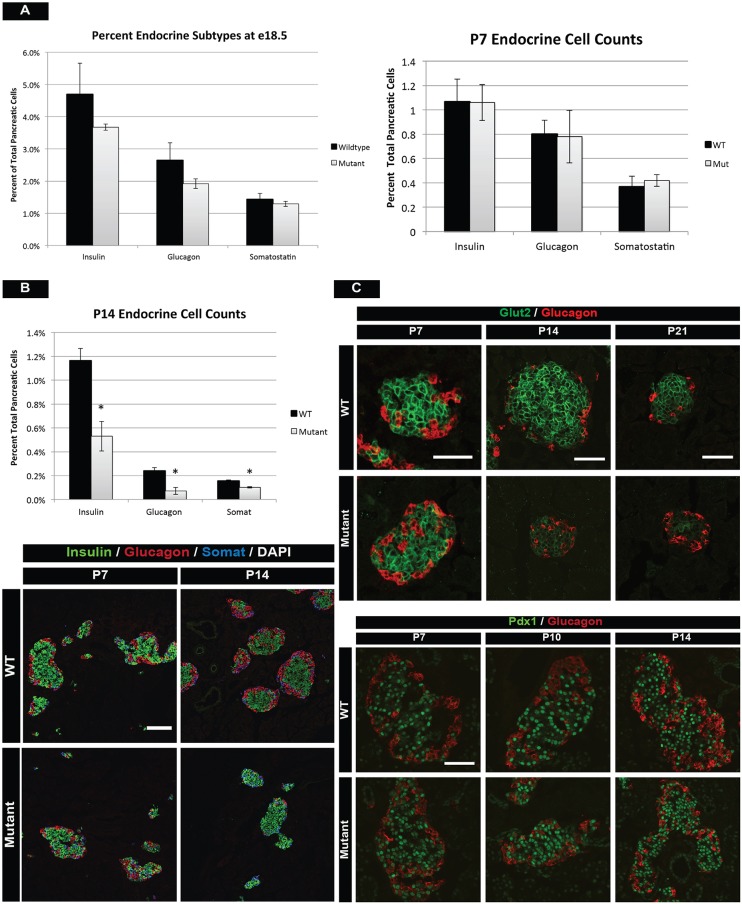Fig. 2.
mTOR is required after birth for islet development. (A) The percentage of β-, α- and δ-cell populations at E18.5 (left) and P7 (right) in mTOR mutants. No significant difference in islet mass is observed at these stages between wild-type and mutant animals. (B) (Top) However, flow cytometry at P14 reveals reduced cell counts for all mutant islet subtypes as compared with wild-type littermates. (Bottom) Hormone immunofluorescence of wild-type and mTOR mutant islets at P7 and P14. Globally, mutant islets are indistinguishable from wild-type islets at P7. One week later, mutants have noticeably fewer endocrine cells. (C) Immunofluorescence for Glut2 in β cells reveals normal glucose-sensing mechanisms at P7, reduced expression beginning at P14, and near absence of Glut2 protein at P21. Despite lower cell counts and fewer glucose transporters, β cells retain normal Pdx1 protein levels, indicating retention of endocrine identity. Mean±s.e.m.; *P<0.05. Scale bars: 50 µm. See also Figs S3 and S4, and Table S3 for numbers of animals used.

